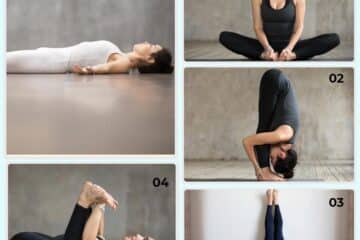In times of stress and uncertainty, the breath serves as a powerful anchor, guiding us back to a place of calm and equilibrium. Yoga, with its emphasis on breath awareness and pranayama (breathing techniques), offers a variety of tools to help manage stress and cultivate a sense of inner peace.
Let’s explore some yoga breathing techniques that you can incorporate into your daily routine to alleviate stress and promote overall well-being.
Deep Belly Breathing (Diaphragmatic Breathing):
Deep belly breathing, also known as diaphragmatic breathing, is a fundamental yogic breathing technique that promotes relaxation and reduces stress.
To practice deep belly breathing, find a comfortable seated or lying position. Place one hand on your abdomen and the other hand on your chest.
Inhale deeply through your nose, allowing your belly to expand as you fill your lungs with air. Exhale slowly and completely through your nose, feeling your belly gently contract.
Continue this deep, rhythmic breathing pattern for several minutes, focusing on the rise and fall of your abdomen with each breath.
Equal Breathing (Sama Vritti Pranayama):
Equal breathing, or Sama Vritti Pranayama, is a simple yet effective breathing technique for restoring balance and calming the mind.
To practice equal breathing, inhale through your nose for a count of four, then exhale through your nose for a count of four.
Maintain a smooth and steady rhythm, ensuring that the duration of your inhalation matches the duration of your exhalation.
As you continue to breathe evenly, allow your body and mind to relax deeply, letting go of tension and stress with each breath.
Alternate Nostril Breathing (Nadi Shodhana Pranayama):
Alternate nostril breathing, or Nadi Shodhana Pranayama, is a balancing and purifying breathing technique that helps calm the nervous system and clear the mind. To practice alternate nostril breathing, sit comfortably with your spine tall and your shoulders relaxed.
Close your right nostril with your right thumb and inhale deeply through your left nostril. At the top of your inhalation, close your left nostril with your ring finger, release your thumb from your right nostril, and exhale through your right nostril.
Inhale through your right nostril, then close it with your thumb and exhale through your left nostril. Continue this pattern, alternating nostrils with each breath, for several rounds, allowing the gentle rhythm of your breath to soothe and center you.
Extended Exhalation (4-7-8 Breathing):
Extended exhalation, such as the 4-7-8 breathing technique, is a calming pranayama practice that encourages relaxation and stress relief.
To practice 4-7-8 breathing, inhale deeply through your nose for a count of four. Hold your breath for a count of seven.
Then, exhale slowly and completely through your mouth for a count of eight, making a soft whooshing sound as you release the breath.
Repeat this cycle for several rounds, allowing each exhalation to release tension and invite a sense of peace and tranquility into your body and mind.
Ujjayi Breath (Victorious Breath):
Ujjayi breath, or Victorious Breath, is a yogic breathing technique that calms the mind, regulates the nervous system, and builds internal heat.
To practice Ujjayi breath, begin by taking a deep inhale through your nose. As you exhale through your nose, slightly constrict the back of your throat, creating a soft whispering sound like the ocean or the sound of wind through trees.
Continue to breathe in this manner, maintaining the gentle constriction at the back of your throat, for several minutes. Allow the steady rhythm of your Ujjayi breath to anchor you in the present moment, quieting the mind and promoting a sense of relaxation and inner peace.
Incorporating these yoga breathing techniques into your daily routine can provide invaluable support for managing stress, anxiety, and overwhelm.
Whether practiced on their own or integrated into a yoga session, these simple yet potent techniques offer a pathway to greater resilience, balance, and well-being.
So, take a moment to pause, connect with your breath, and allow the healing power of yoga to guide you back to a place of peace and tranquility, even in the midst of life’s challenges.



